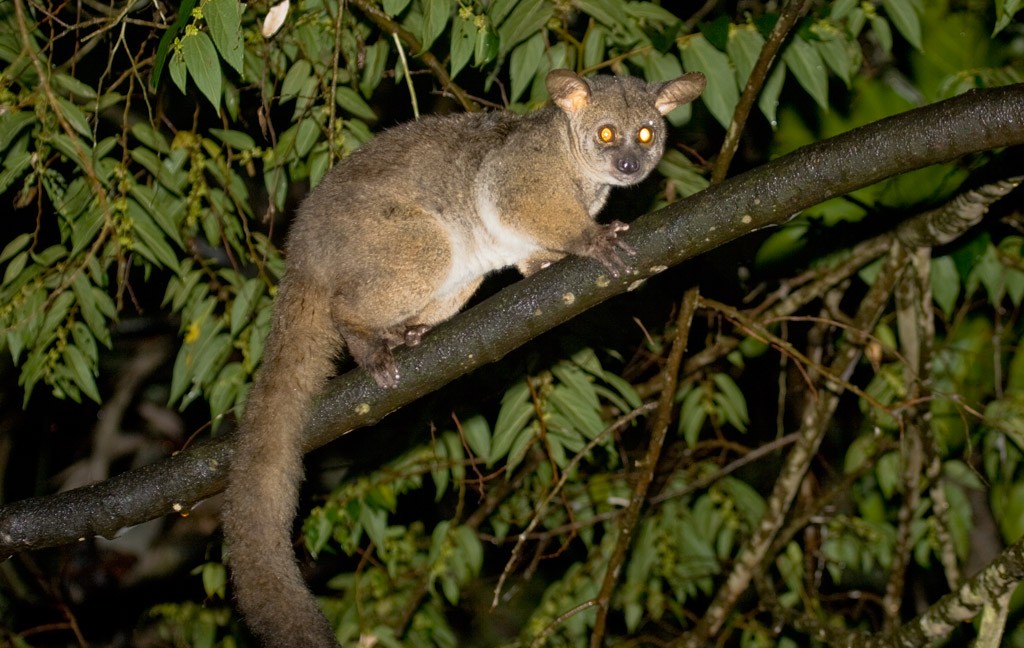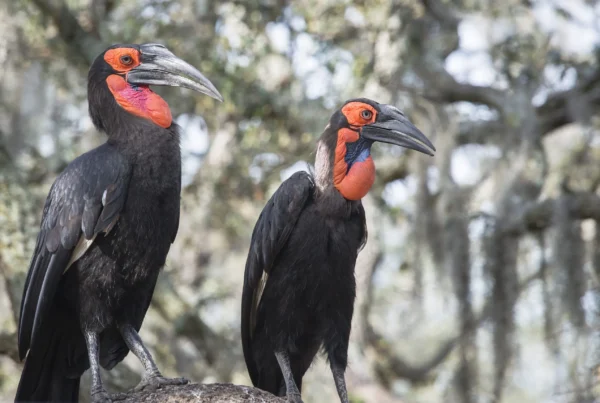5 Fascinating Facts About Bushbabies
Hidden among the dense foliage of Africa’s night forests is a creature so elusive, so endearing, and so strange that it seems born of folklore. Meet the bushbaby—also known as a galago. These small, wide-eyed primates are not just adorable; they are nature’s acrobats, night navigators, and vocal performers, all rolled into one tiny package.
Despite their small size and nocturnal habits, bushbabies have captivated researchers, tourists, and storytellers alike. Their large, reflective eyes, haunting cries, and astonishing agility make them one of the most intriguing species of the African nightscape. But there’s far more to them than meets the eye.
Let’s dive into five fascinating, deeper facts about bushbabies that will change the way you view these magical creatures—and perhaps ignite a desire to encounter them on your next African safari.
Facts About Bushbabies
1. They Are Primates—but Very Unique Ones
Bushbabies belong to the primate order, making them distant relatives of monkeys, apes, and even humans. However, they are part of a more primitive group known as prosimians. These are considered among the earliest forms of primates, retaining several characteristics that distinguish them from more evolved species.
Unlike monkeys and apes, bushbabies have enhanced olfactory senses and rely heavily on smell and sound rather than complex social interaction. Their brain-to-body size ratio is smaller than most primates, and they maintain features such as:
- Large, forward-facing eyes for enhanced night vision
- Specialized ears capable of rotating independently
- Grooming claws on their second toe—unusual among primates
These traits highlight their evolutionary link to ancient primates and provide insight into what early primate life may have looked like millions of years ago.
2. Masters of the Night: Nocturnal and Elusive
Perhaps one of the most captivating features of bushbabies is their nocturnal lifestyle. As the sun sets and darkness takes hold, these tiny primates come alive—darting through branches with lightning speed, hunting insects, or calling out with eerie vocalizations that can send shivers down your spine.
Their night dominance is supported by several adaptations:
- Tapetum lucidum: A layer behind the retina that reflects light back into the eyes, greatly enhancing low-light vision. It’s what causes their eyes to glow in torchlight.
- Highly developed hearing: Their large ears detect the faintest rustle of insects, small prey, or even a distant predator.
- Solitary foraging: They prefer to move and feed alone, although some species sleep in small family groups during the day.
Spotting a bushbaby on a night drive or guided walk is a thrilling highlight for many safari-goers, as they blend so seamlessly into their shadowy habitats.
3. Phenomenal Jumpers with Olympic-Level Skills
One of the most remarkable abilities of bushbabies is their extraordinary jumping power. Despite their small size—most bushbabies are only about 15 cm (6 inches) long excluding the tail—they can leap over 2.25 meters (7 feet) in a single bound!
How do they achieve such feats?
- Powerful hind limbs: Their back legs are long and muscular, functioning like springs.
- Elastic tendons: Tendons in the legs store energy like a rubber band, releasing it at take-off.
- Tail as a stabilizer: Their long tails act as counterbalances in mid-air, guiding smooth landings.
These leaps allow them to hunt insects on the wing, evade predators, and move between trees without ever touching the ground. It’s a stunning adaptation for forest life and makes them look like tiny parkour experts of the night.
4. Complex Communication: Cries, Clicks, and Squeaks
While bushbabies may look silent and shy, they are anything but quiet. In fact, their name comes from the distinctive crying sound they make—like a baby wailing from within the bush.
Bushbabies use a variety of vocalizations to communicate:
- Territorial calls: To warn off intruders from their range
- Alarm sounds: Short shrieks when danger is detected
- Mating calls: Complex, softer calls to attract a mate
- Social chirps: Used between mothers and offspring or during grooming
In addition to vocal sounds, they also use scent marking through specialized glands. These chemical cues define territory, identify individuals, and even indicate reproductive status.
Studying their communication has offered insights into early primate language evolution—showing that even tiny creatures like the bushbaby play a big role in the story of communication.
5. Vital Role in Ecosystems and Biodiversity
Beyond their charm, bushbabies play important roles in their ecosystems. They are both predators and prey, forming essential links in the food web.
As insectivores and fruit eaters, they help regulate insect populations and aid in seed dispersal, especially for small fruiting trees. In turn, they are preyed upon by owls, snakes, genets, and even some primates.
However, bushbabies face several conservation challenges:
- Habitat loss: Deforestation for agriculture and urban expansion threatens their living spaces
- Capture for the pet trade: Although illegal in many countries, bushbabies are sometimes captured and sold, often dying in captivity
- Lack of research: Many species remain understudied, with poorly understood ranges and population dynamics
Fortunately, ecotourism and conservation-focused safaris play a critical role in protecting these species by providing income to local communities and drawing attention to their plight.
Discover Bushbabies and More on Safari (Facts About Bushbabies)
Watching a bushbaby leap silently from branch to branch, its glowing eyes reflecting your torchlight, is an unforgettable moment—one that many describe as the highlight of their safari. These elusive creatures encapsulate the mystery, magic, and marvel of Africa’s nocturnal wilderness.
If you want to experience the thrill of night drives, spot rare wildlife, and connect with Africa’s lesser-known wonders, there’s no better partner than WildHorn Africa.
Their expert guides, custom itineraries, and deep-rooted commitment to conservation make them the ideal choice for travelers seeking authentic, ethical, and immersive safari experiences.
Book Your African Safari with WildHorn Africa
Facts About Bushbabies #Facts About Bushbabies Facts About Bushbabies





 WildHorn Africa – Authentic and unforgettable tours across Africa, guided by local experts who know the land, wildlife, and culture best.
WildHorn Africa – Authentic and unforgettable tours across Africa, guided by local experts who know the land, wildlife, and culture best.


